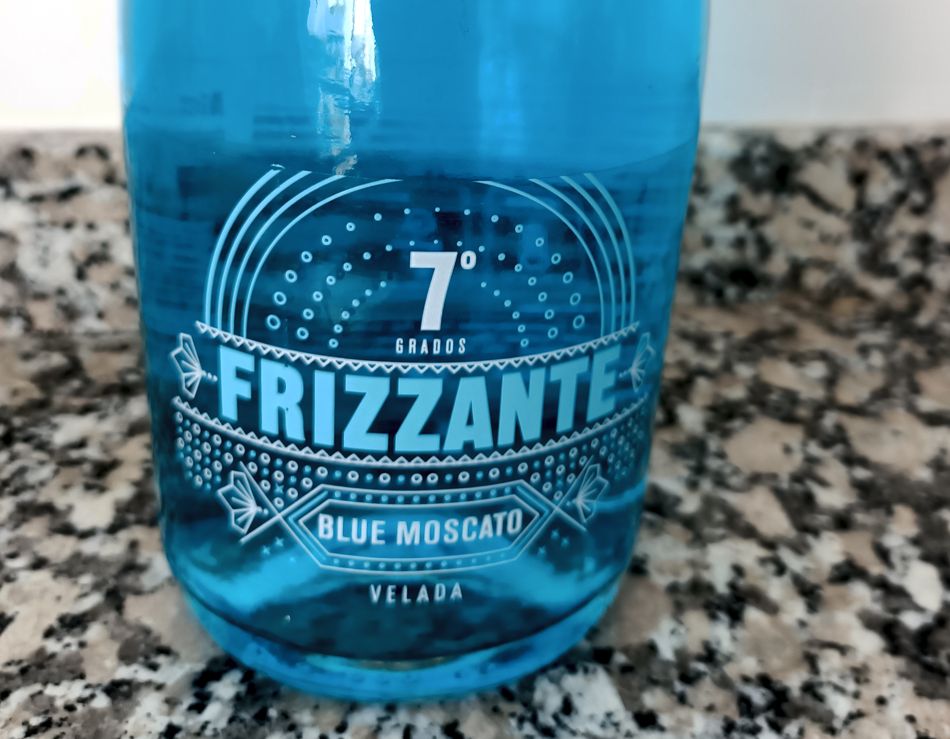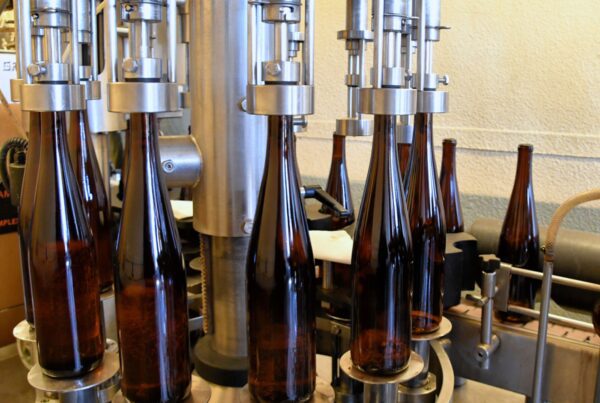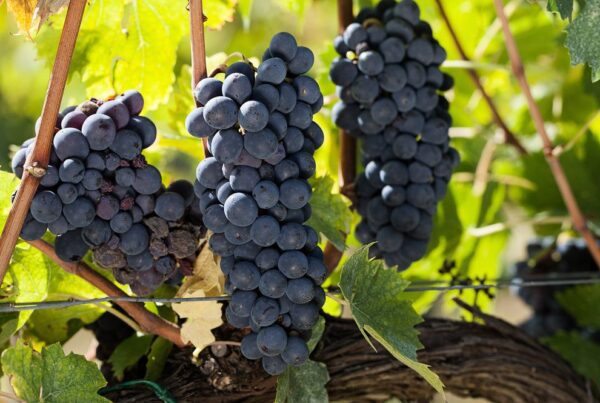Blue Moscato is a relatively new wine that has been gaining in popularity.
In this article, you will learn what blue Moscato is, what it tastes like and how it differs from both traditional Moscato and blue wine.
Contents
What is blue Moscato?
Blue Moscato is a sweet, fruity low-alcohol wine made from the aromatic Muscat grape.
The blue color is achieved through the addition of colorants. The colorants are usually derived from blueberries or blackberries. It is often slightly fizzy or sparkling.

What blue Moscato tastes like
Blue Moscato is made from the Muscat grape and it has perfume-like aromas, such as rose petals and elderflower.
Moscato has a light, crisp flavor with notes of orange blossom, apricot, and peach. There can also be hints of berry notes where the blue color is derived from berries.
The high sugar content in Muscat grapes gives it its sweet flavor.
Blue Moscato is often made in a sparkling or fizzy style of wine.
What makes blue Moscato blue
The blue color is achieved by adding natural colorants to the wine.
The colorants are usually derived from fruits such as blueberries or blackberries; however, it is possible that some are colored using blue food coloring.
The amount of colorant added will vary depending on the desired shade of blue.
Blue Moscato alcohol content
Both blue Moscato and Moscato wine tend to be significantly lower in alcohol than regular wine.
A typical Moscato wine have around 5.5% ABV.
A typical white wine is around 13% ABV making Moscato an excellent low-alcohol option.
That said, alcohol levels vary, but the frizzante blue Moscato, pictured below, for example, is 7% ABV.

Frizzante blue Moscato wine
Frizzante blue Moscato wine is a semi-sparkling blue Moscato wine.
The term “frizzante” usually indicates light bubbles, meaning it has a softer sparkle than say a Champagne.
What temperature to serve blue Moscato
Serve blue Moscato well chilled between 6-8 °C (43-46 °F).
Blue wine vs blue Moscato – What’s the difference?
EU regulations do not permit blue wine to be labelled as “wine”; however, it is commonly referred to as such (including for the purposes of this article).
Blue wine and blue Moscato are both types of wine that are blue in color, but they are not the same thing.
Blue wine is a type of wine that has been colored blue using natural or artificial food coloring. The color is usually added to white wine.
Blue wine can be made from a variety of grapes like Chardonnay or Sauvignon Blanc and it is sometimes made from a mixture of white and red grapes.
Blue Moscato, on the other hand, is a specific type of wine made from the Muscat grape only.

Where blue wine comes from
The first blue wine was produced in 2016 in Spain by a company called Gïk.
It is now sold in several countries around the world.
Blue Moscato food pairing
Spicy food
Spicy food, such as many Asian dishes pair well with low-alcohol wines like Blue Moscato.
Why?
Well, the alcohol in wine increases the heat in food, such as ginger or chilli.
So, wines that are high in alcohol can cause a burning sensation in the mouth, which can be unpleasant.
Low-alcohol wine, like Blue Moscato, therefore pair well with spicy and Asian foods because they likely won’t cause this burning sensation in the mouth.
The tannins in wine can also increase the burning sensation in spicy food.
Blue Moscato, like all white wines, is low in tannins, so this is another reason to pair Blue Moscato with spicy food.
Finally, being an aromatic wine, it works well with aromatic spices like cardamom and cinnamon.
Try Blue Moscato with Chicken Teriyaki or your favorite curry.
Flaky fish
Pairing white wine with fish is a classic wine pairing for a reason.
Pair your blue Moscato with a flaky fish like Sea Bass, Flounder or Haddock.
Cheese
Pair Blue Moscato with medium to firm cheese.
Try it with a Comté or a sheep cheese like Manchego.
Read with confidence: I am a certified wine expert (WSET L3).




